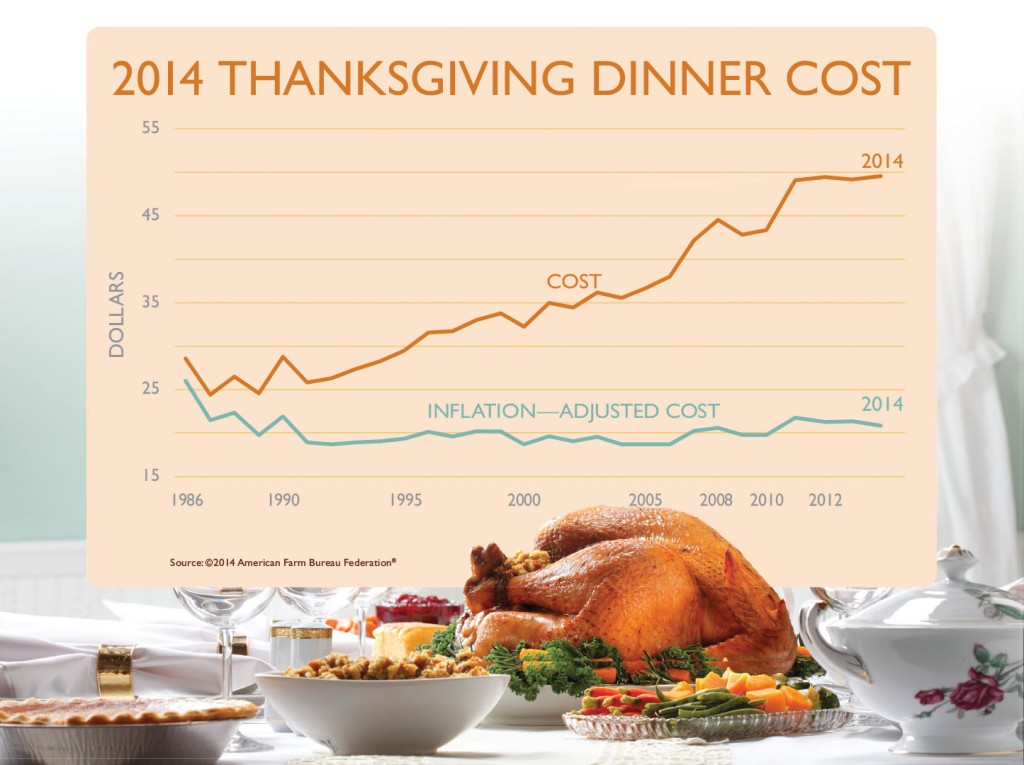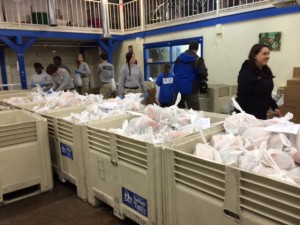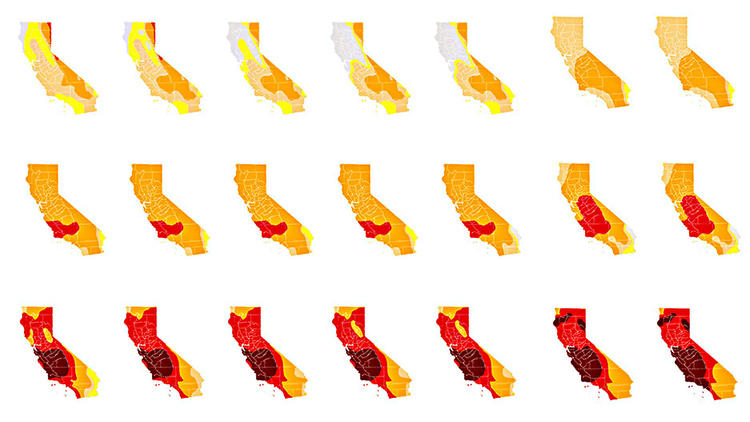The American Farm Bureau Federation’s 29th annual informal price survey of classic items found on the Thanksgiving Day dinner table indicates the average cost of this year’s feast for 10 is $49.41, a 37-cent increase from last year’s average of $49.04.
The big ticket item – a 16-pound turkey – came in at $21.65 this year. That’s roughly $1.35 per pound, a decrease of less than 1 cent per pound, or a total of 11 cents per whole turkey, compared to 2013.
“Turkey production has been somewhat lower this year and wholesale prices are a little higher, but consumers should find an adequate supply of birds at their local grocery store,” AFBF Deputy Chief Economist John Anderson said. Some grocers may use turkeys as “loss leaders,” a common strategy deployed to entice shoppers to come through the doors and buy other popular Thanksgiving foods.
The AFBF survey shopping list includes turkey, bread stuffing, sweet potatoes, rolls with butter, peas, cranberries, a relish tray of carrots and celery, pumpkin pie with whipped cream, and beverages of coffee and milk, all in quantities sufficient to serve a family of 10. There is also plenty for leftovers.
Foods showing the largest increases this year were sweet potatoes, dairy products and pumpkin pie mix. Sweet potatoes came in at $3.56 for three pounds. A half pint of whipping cream was $2.00; one gallon of whole milk, $3.76; and a 30-ounce can of pumpkin pie mix, $3.12. A one-pound relish tray of carrots and celery ($.82) and one pound of green peas ($1.55) also increased in price. A combined group of miscellaneous items, including coffee and ingredients necessary to prepare the meal (butter, evaporated milk, onions, eggs, sugar and flour) rose to $3.48.
In addition to the turkey, other items that declined modestly in price included a 14-ounce package of cubed bread stuffing, $2.54; 12 ounces of fresh cranberries, $2.34; two nine-inch pie shells, $2.42; and a dozen brown-n-serve rolls, $2.17.
The average cost of the dinner has remained around $49 since 2011.
“America’s farmers and ranchers remain committed to continuously improving the way they grow food for our tables, both for everyday meals and special occasions like Thanksgiving dinner that many of us look forward to all year,” Anderson said. “We are blessed to be able to provide a special holiday meal for 10 people for about $5.00 per serving – less than the cost of most fast food meals.”
The stable average price reported this year by Farm Bureau for a classic Thanksgiving dinner tracks closely with the government’s Consumer Price Index for food eaten at home (available online at http://www.bls.gov/news.release/cpi.nr0.htm), which indicates a 3-percent increase compared to a year ago.
A total of 179 volunteer shoppers checked prices at grocery stores in 35 states. Farm Bureau volunteer shoppers are asked to look for the best possible prices, without taking advantage of special promotional coupons or purchase deals, such as spending $50 and receiving a free turkey.
Shoppers with an eye for bargains in all areas of the country should be able to purchase individual menu items at prices comparable to the Farm Bureau survey averages. Another option for busy families without a lot of time to cook is ready-to-eat Thanksgiving meals for up to 10 people, with all the trimmings, which are available at many supermarkets and take-out restaurants for around $50 to $75.
The AFBF survey was first conducted in 1986. While Farm Bureau does not make any scientific claims about the data, it is an informal gauge of price trends around the nation. Farm Bureau’s survey menu has remained unchanged since 1986 to allow for consistent price comparisons.








